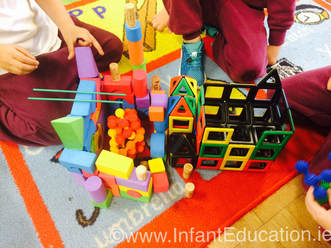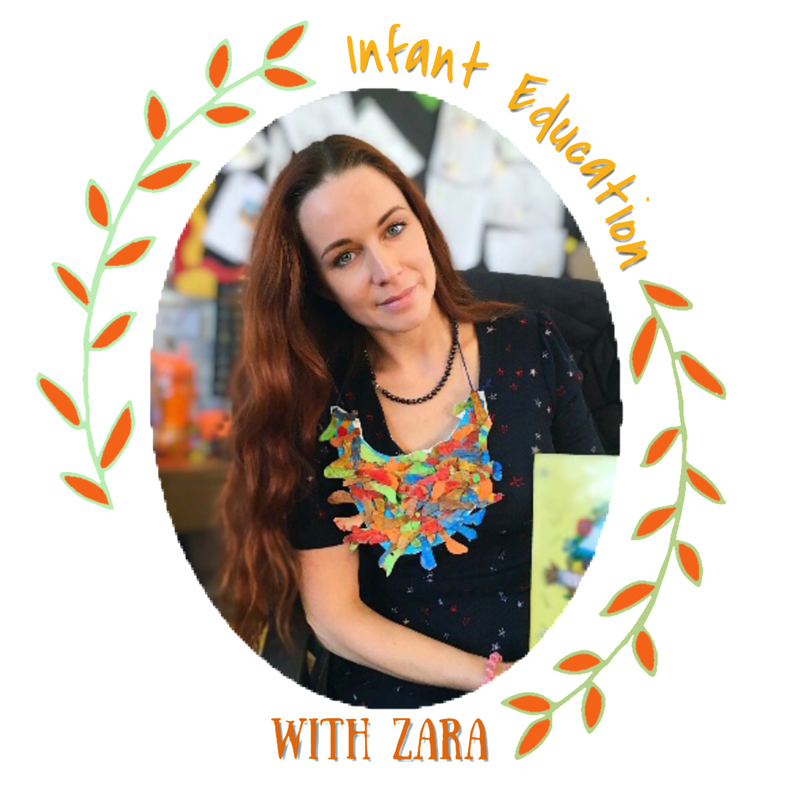Teaching the skills of successful learning through play!
As children mature so do the expectations we place on them. You need to allow children the time they need to adjustment from one learning environment to another. Just like every other area of a child's learning, there are stages to their learning development and developing their play skills is no different.
From the start...
Avoid overwhelming children with rules of what they can and can't do. I take a back seat for much of the first month and allow spontaneous, unstructured child-initiated play experiences. If you saw me in my class during Aister in September you would quite often see me sitting quietly in the corner just observing discretely with a clipboard and pen in hand at all times. I do not interfere unless I need to. I just watch. You see, I am like David Attenborough observing the children in their most natural environment, and it is during this time that you will get to know your class best. You will very quickly learn who is shy, who is confident, who likes to take the lead, who struggles to communicate. Every kind of behaviour will come to light if you keep in the shadows those first weeks. The information you will gather by doing this incredibly valuable and will inform the development of your Aistear play. This is the most important focus of Aistear in the early days. If you really want to know what your difficulties will be, find them first.
Step 1 - The Basic set-up
“Tell me and I forget, teach me and I may remember, involve me and I learn.”
― Benjamin Franklin Step 2 - What to observe?
You will often hear me call The Aistear Hour, "My Assessment Hour". Good Assessment is key to good teaching, without it you may as well be teaching blindfolded. In the early days I try to focus on one or two observations a day using a simple check list and the occasional quick note. Below is an example of a few assessments I took this week.This is neat for me, normally my assessment sheets are annotated and covered little comments, a typical working document!
Here are a few observations I make in the early days.
It's likely that some children will be super skilful players and some will struggle. Aistear will be the most beneficial way of learning for every child's style and there is nothing more rewarding than watching a child's confidence grow and communication skills develop.
Step 3 - Have a focus skill for them to work on.
During the Aistear Hour the children nearly forget I'm there. Which is great because the classroom really becomes their own child-led learning environment where they feel comfortable to be themselves. Once you have identified problem areas in their play, select one or two to be the focus of the next Aistear Hour. E.g. Explain to the children that today you want them to really try hard to...
1) Try to play in a group of two or more (I tell them they have a much better chance of learning something new today if they have someone else to learn from) 2) Use topical vocabulary we discussed in a teacher lead role-play scenario in a previous language lesson. When I'm doing a observation day with a focus, the only time I speak is to make 'Spot Praise' If I see a child modelling a good behaviour I immediately throw praise their way. What I said today included:
"Well done Mark! you're using the 'family words' we learnt! I heard you say aunty and uncle" (important to repeat the focus vocabulary back)
"Peter, well done for playing in a group today! I'm really proud of you!"
At the end of a focus session allow a few minutes for Focus Goal Feedback. Let the children know who did well and what it was they did well. Dish out some stickers and make sure they tell their grown-up what they did well today. We want these skills to be brought home!
Step 4 - **Tidy up** - Aistear won't happen until they get this happening!
Teaching the children to tidy up properly may well be the breaking of you. Get this right from the start and Aistear will become the highlight of your day. I always tell the children "If you can do it right once, you can do it right every time!"
So here is what I do for any time of day where we have to tidy up. Assuming you have already observed who is good at tidying up and who is likely to continue playing, you will have a "watch list".
"Remember... However long it takes you to clean up today will decide how long we spend on clean up tomorrow. If it takes you a long time, you will have less Aistear tomorrow. If you clean up well, you will have extra Aistear tomorrow."
Step 5 - Problem Solving during Aistear - Ask a friend...
You will probably find that children are always coming to you for solutions to their problems during play. Part of the benefits of play is to teach the children to become more independent. I have a procedure the children must follow if they come up against a problem. They must ask two friends for help before they come to me! My children know this off by heart... Say, "What do you do if you need help?" Children "Ask two friends and if you're still stuck ask teacher" Today a child couldn't close the poppers on a baby grow. I was her first port of call, I reminded her of the procedure and this is what happened... 
This is what Aistear is all about... she asked a friend and they problem solved like pros!
Don't forget to give spot praise or review how well they solved a problem at the end of a session.
Say, "Jenny you did problem solving really well today, and you learnt how to do something new from your friend! Well done to the both of you!" "Super problem solving Anna, you didn't need to get me, you solved that problem yourself!" You get the idea, but you need to be clear about what they did well, so others can mirror the behaviour. Check out the attempt to problem solve in the video below. This was taken mid year, last year so the children were well used to figuring it out themselves. I think they did very well!
She got in in the end! :)
Step 6 - As Your Aistear develops...
Over the year there are many many ways my Aister will develop and incorporate various learning objectives and outcomes. Way to many to put in one post. But towards the end of September here are a few ways our play will begin to develop and grow.
Step 7 -Always have your camera on hand
Photos and videos will be your best source of assessment, reviewing, planning, teaching, everything. I always have my camera on hand to catch things. Share them with parents and other classes in your school or beyond. They are an invaluable learning tool for other children.
Possible problems and sanctions
Thank you to the readers who took the time to share their own experiences of implementing Aistear in the early days. I am delighted to be able to share with you some of their thought and ideas below.
© InfantEducation.ie 2017. Unauthorized use and/or duplication of this material without express and written permission from this site’s author and owner is strictly prohibited. Excerpts and links may be used, provided that full and clear credit is given to InfantEducation.ie with appropriate and specific direction to the original content.
3 Comments
Laura
2/10/2018 01:57:24 am
Really love this post. I’m curious about grouping, do you allow the children to choose their group for the whole year, if so how do you manage if children are doing the same play everyday?
Reply
This article on 7 steps to successful Aistear appeared on my Facebook time line yesterday and I’m writing to let you know I found your tips most helpful! I printed off the article this morning and have added 2 new steps to our own Aistear today- the problem solving and the picture at the end. The children loved the new changes. I am also going to bring in the timer for tidy up. Thank you so much for sharing your knowledge and expertise!!
Reply
3/10/2020 11:15:01 am
I just wonder about the noise level - Aistear can sound and feel so noisy and there can be lots of play fighting eg in small world. It’s early in the year and I can see that a lot I’ll depend on my oral language lessons etc . Thanks for an amazing blog.
Reply
Your comment will be posted after it is approved.
Leave a Reply. |













 RSS Feed
RSS Feed